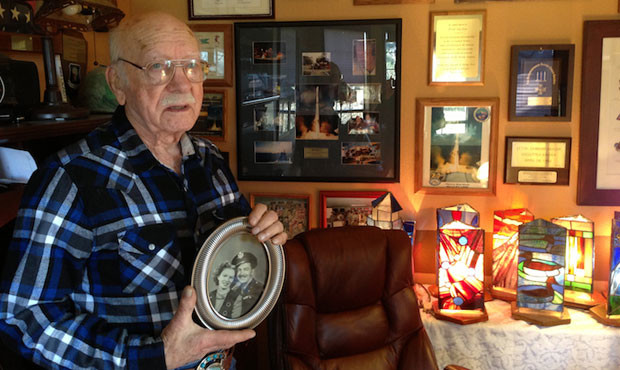Seattle hunger: 15 percent spike in food assistance
Dec 14, 2016, 5:05 PM | Updated: 5:15 pm

Seattle distributed 13,981,000 pounds of food over the past year, a 15 percent increase in food handed out by the city. (Bromford, Flickr)
(Bromford, Flickr)
The local need for food to battle hunger appears to have heightened, according to a report from mayors across the United States. There was a 15 percent increase in food distributed by the city to tackle Seattle hunger over the past year — the highest spike of any city surveyed.
A study conducted by The United Conference of Mayors and the National Alliance to End Homelessness was released this week. The study states that many cities have homelessness rates higher than the national average, yet requests for emergency food assistance have only risen slightly. Seattle, however, saw a spike in the amount of food it gave out — a 15 percent increase over the previous year.
Northwest food banks experiencing low donations
In Seattle, the study reports, the city distributed 13,981,000 pounds of food over the past year. Most cities reported an increase in distributed food to the hungry, but Seattle had the highest increase. Other cities may have given out more pounds of food, but the increase over the previous year was generally far lower than Seattle — an average of 2 percent.
The only other city with an rate increase close to Seattle’s was Des Moines, Iowa with 11 percent. Seattle was budgeted to spend $3,057,000 to fund emergency food assistance; a 2 percent increase over the past year.
Seattle was among 38 cities surveyed to provide a “snapshot” of homelessness and hunger in America. It was the only Washington city to be included in the study. Portland and Gresham, Ore. were the only other Northwest cities.
A total of 41 percent of the surveyed cities reported the need for emergency food assistance increased over the past year. Families were 63 percent of those requesting food, 51 percent were employed, and 18 percent were elderly, while 8 percent were homeless. The study points out that low wages is cited as the leading cause for hunger in the cities. CNN reports that those statistics indicate that families seeking food assistance decreased since the last report. However, “the proportion of people who were employed and in need of food assistance rose sharply — increasing to 51 percent from 42 percent.”
The study’s message comes as some food banks in the Puget Sound region are reporting low donations, and during a time of year they depend on generosity. This includes the Salvation Army Renton Rotary Food Bank, the Puyallup Food Bank, and Bremerton Foodline.
Seattle hunger and the homeless crisis
High housing costs were also pointed out as a related factor in homelessness.
“The one thing we found to be almost universally true among the surveyed cities was the the lack of affordable housing prevented (cities) from solving the problem of of homelessness,” said Nan Roman, President of the National Alliance to End Homelessness. “While the report shows many of the cities are able to reduce homelessness, the national lack of affordable housing is likely to have a chilling effect on their efforts over the coming years.”
The Conference of Mayors points out that many cities in the country have higher rates of homelessness than the national average, yet requests for food assistance are only rising slightly.
Seattle is among the areas bucking the national trends. Washington state saw a 7.3 percent increase in homelessness over the previous year. The Seattle-King County region is where homelessness grew considerably, whereas areas around it experienced a decrease.
Seattle Mayor Ed Murray has set aside millions to tackle the homelessness crisis in Seattle, and has opened a series of tent cities to start addressing the issue of unsheltered people on the streets. The city’s ultimate goal is a program called “Pathways Home” that will aim for long-term housing solutions to homelessness.













